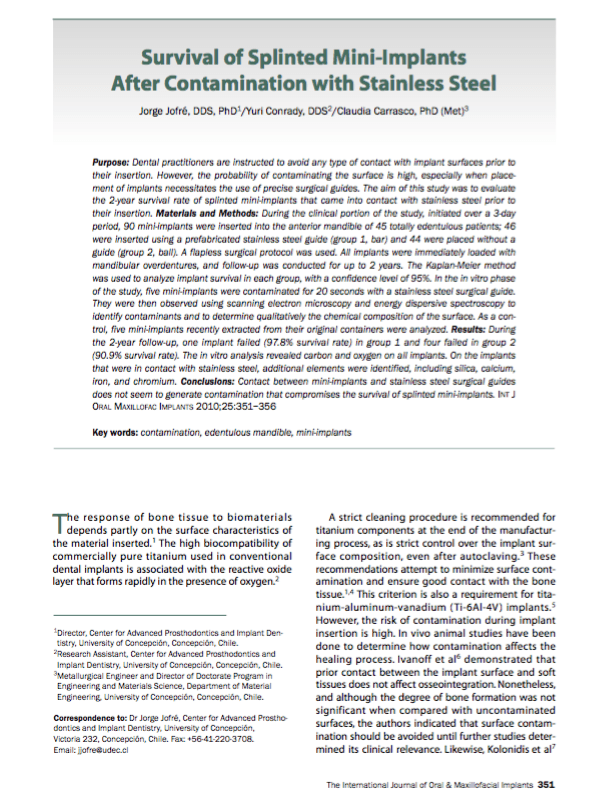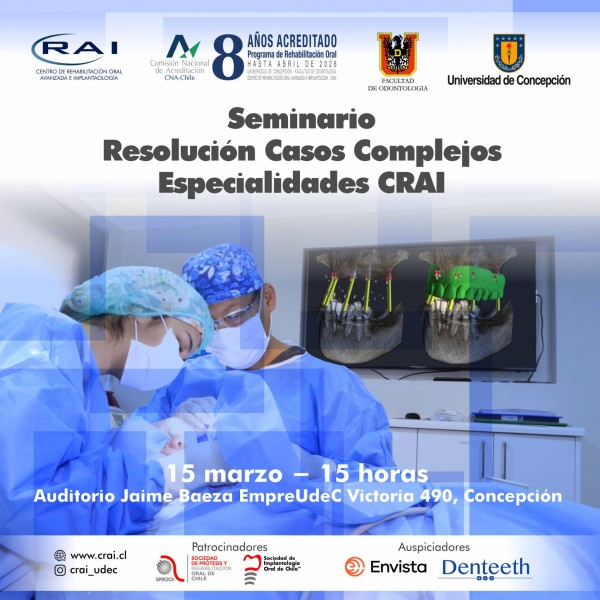Survival of splinted mini-implants after contamination with stainless steel.
The International Journal of Oral & Maxillofacial Implants. 2010 Mar-Apr;25(2):351-6 (ISI)
J Jofré, Y Conrady, Carrasco C.
ABSTRACT:
PURPOSE:
Dental practitioners are instructed to avoid any type of contact with implant surfaces prior to their insertion. However, the probability of contaminating the surface is high, especially when placement of implants necessitates the use of precise surgical guides. The aim of this study was to evaluate the 2-year survival rate of splinted mini-implants that came into contact with stainless steel prior to their insertion.
MATERIALS AND METHODS:
During the clinical portion of the study, initiated over a 3-day period, 90 mini-implants were inserted into the anterior mandible of 45 totally edentulous patients; 46 were inserted using a prefabricated stainless steel guide (group 1, bar) and 44 were placed without a guide (group 2, ball). A flapless surgical protocol was used. All implants were immediately loaded with mandibular overdentures, and follow-up was conducted for up to 2 years. The Kaplan-Meier method was used to analyze implant survival in each group, with a confidence level of 95%. In the in vitro phase of the study, five mini-implants were contaminated for 20 seconds with a stainless steel surgical guide. They were then observed using scanning electron microscopy and energy dispersive spectroscopy to identify contaminants and to determine qualitatively the chemical composition of the surface. As a control, five mini-implants recently extracted from their original containers were analyzed.
RESULTS:
During the 2-year follow-up, one implant failed (97.8% survival rate) in group 1 and four failed in group 2 (90.9% survival rate). The in vitro analysis revealed carbon and oxygen on all implants. On the implants that were in contact with stainless steel, additional elements were identified, including silica, calcium, iron, and chromium.
CONCLUSIONS:
Contact between mini-implants and stainless steel surgical guides does not seem to generate contamination that compromises the survival of splinted mini-implants.




